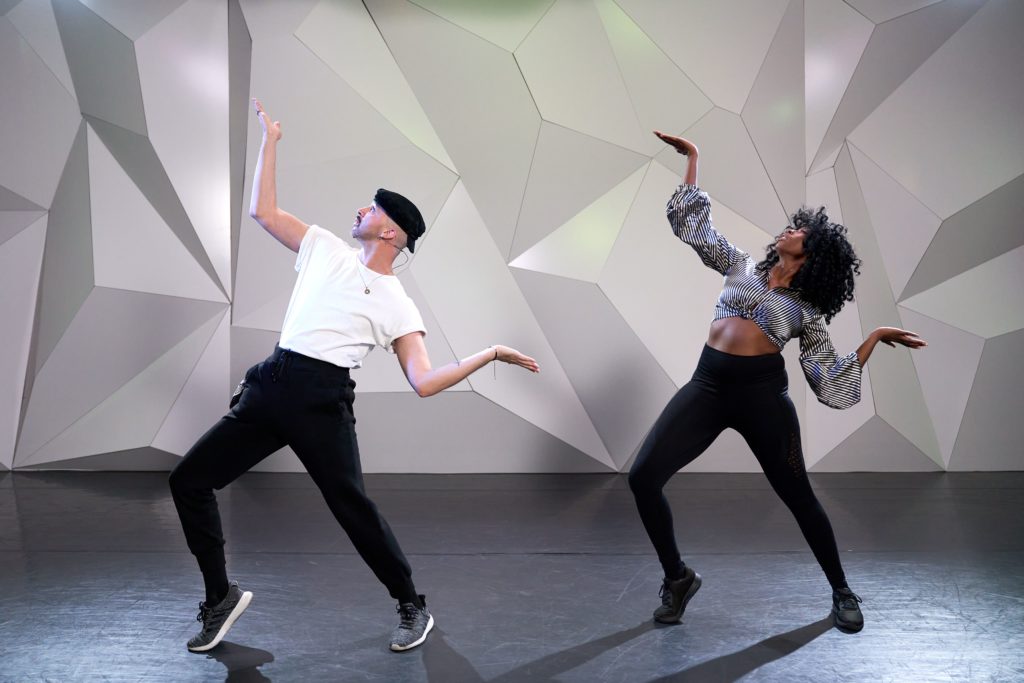By Noel Bajandas
How To Find Intention in a Performance
When we talk about having intention in a performance, what do we mean?
Everyday, we move through life intending to do things. It’s the drive that morphs that idea into action, which then allows us to react, which causes more action, and so on and so forth. So, what happens, when we intend to focus on tunneling that particle of motivation, creatively into your body?
As a performer, that awareness to entertain kicks in, zoning me into a space to create a more captivating experience for you, as the audience.
Now, what do I mean when I say “being aware”?
When I’m performing, I always put myself in the position of the viewer. I think to myself, if I were watching this right now:
- What do I want to feel?
- Where do I want to go?
- What are the moments that will trigger and generate the reactions I’m hoping to get from my audience?
That way, when it’s time for me to create the moment, it’s not only being driven by my needs as the artist and dancer, but by the type of experience I want the people who are watching to have.
Remember, as humans, we experience a heightened perception of life through our senses, so our job is to try to trigger as much of those as possible with the right dose of intention through the power of movement.
“As a performer, that awareness to entertain kicks in, zoning me into a space to create a more captivating experience for you, as the audience.”
Noel Bajandas
8 Ways To Create a Captivating Performance

1. Tone
I always talk about the importance of tone during dance because it’s the part that dictates the overall attitude and energy of the conversation, and in this case, the performance. A song will tell you how to feel. Listen to the tone of the music, generate the movement based on that energy, and let that be the foundation to everything else that will eventually help create the experience.
2. Texture
Do you prefer smooth or crunchy peanut butter? Same taste, slightly different texture, right? Right. The texture is what creates an entirely different experience, so when it comes to dancing, it’s the play on this consistency that will help to create a more profound experience for those watching you, giving them some variety.
3. Emotion
It is understood that humans have as many as 27 distinct emotions. So, how do we tap into these emotions through our movement and how do we trigger them in the viewer? Whatever emotion you’re tapping into is what the audience is going to react to, so always remember to let the feeling drive the movement. Don’t let the movement just be an empty shell.
4. Musicality
There’s a quote from a choreographer I admire where he says “Music is the Universal Language, and Dance is its interpreter.” When we perform to music, what we do becomes what the audience visually experiences, so be smart on how you present it. I’ll tell you, sometimes the most subtle physical approaches to the music make a bigger impact than the “flashy” stuff. It’s all about creating a moment, and not being overwhelming in your performance.
5. Eye Contact
Know that your eyes can say so many things without you verbally saying anything at all. They are the portal to whatever world you are imagining in your head and giving the spectators a glimpse of that fantasy. A good exercise I like to do with my students is to play with angles of your face and look through those angles while dancing. Each angle shifts the eyes to work differently, giving it a different perspective.
6. Internal & External Energy
Know the difference between external and internal energy. The external is what they are going to see, and the internal is what they are going to feel. Learning how to balance these two out will not only let you sustain your energy throughout your routine, but also create some dynamics within the performance.
7. Storytelling
We all want things to make some kind of sense, so tell me something. What’s the story behind your performance? Are you a character in your story, or are you just emoting a certain emotion and creating a story off of that one thing? It can be as simple or complex as you want, just make sure you are clear with the delivery and the control.
8. Style
And lastly, my favorite part is the stylization of the performance. What sets me apart from others is my ability to tell a story through dance, as well as how stylized my movement has become. Versatility is key. You want to be able to give everyone something they can relate to. I have been able to develop an approach to dance that is very much stylized to who I am as an artist and a creator. So, I challenge you to create your own approach to your own movement as well.
Finally, just have fun. If it feels good to you, then most likely, it’ll feel good to the crowd, and that’s really the ultimate outcome. I hope this helps you break down the process, and realize that it doesn’t take much to create a captivating moment… just some basic tools to understand and the awareness to use them while you’re performing.

